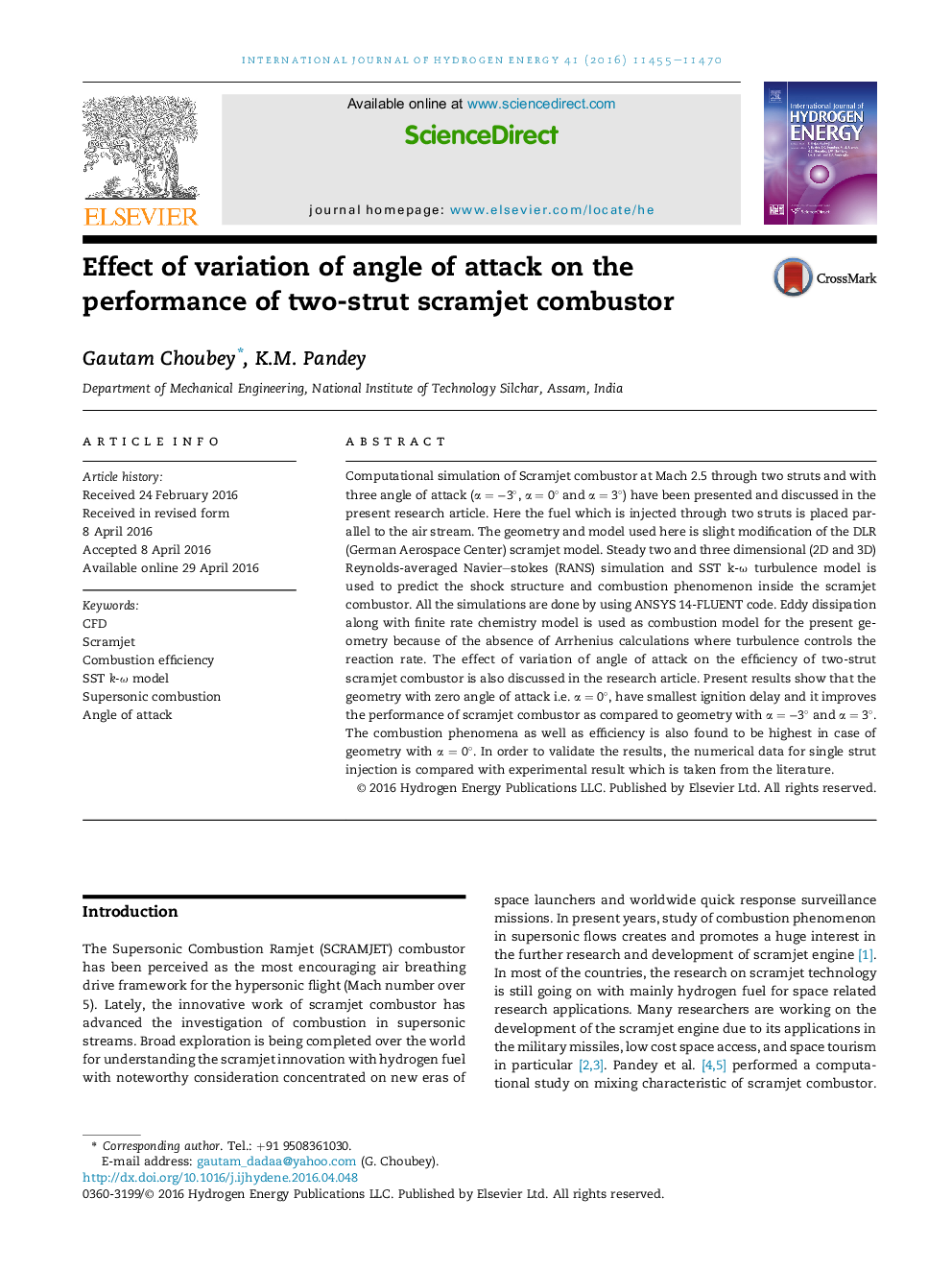| Article ID | Journal | Published Year | Pages | File Type |
|---|---|---|---|---|
| 1269577 | International Journal of Hydrogen Energy | 2016 | 16 Pages |
•Effects of presence of two struts over single strut are presented.•Two-strut based scramjet combustor gives the possibility to enhance combustion.•Variation of angle of attack in Two-strut based scramjet combustor was investigated.•Flow field in two-strut is more prominently affected by combustion phenomenon.
Computational simulation of Scramjet combustor at Mach 2.5 through two struts and with three angle of attack (α = −3°, α = 0° and α = 3°) have been presented and discussed in the present research article. Here the fuel which is injected through two struts is placed parallel to the air stream. The geometry and model used here is slight modification of the DLR (German Aerospace Center) scramjet model. Steady two and three dimensional (2D and 3D) Reynolds-averaged Navier–stokes (RANS) simulation and SST k-ω turbulence model is used to predict the shock structure and combustion phenomenon inside the scramjet combustor. All the simulations are done by using ANSYS 14-FLUENT code. Eddy dissipation along with finite rate chemistry model is used as combustion model for the present geometry because of the absence of Arrhenius calculations where turbulence controls the reaction rate. The effect of variation of angle of attack on the efficiency of two-strut scramjet combustor is also discussed in the research article. Present results show that the geometry with zero angle of attack i.e. α = 0°, have smallest ignition delay and it improves the performance of scramjet combustor as compared to geometry with α = −3° and α = 3°. The combustion phenomena as well as efficiency is also found to be highest in case of geometry with α = 0°. In order to validate the results, the numerical data for single strut injection is compared with experimental result which is taken from the literature.
Graphical abstractFigure optionsDownload full-size imageDownload as PowerPoint slide
